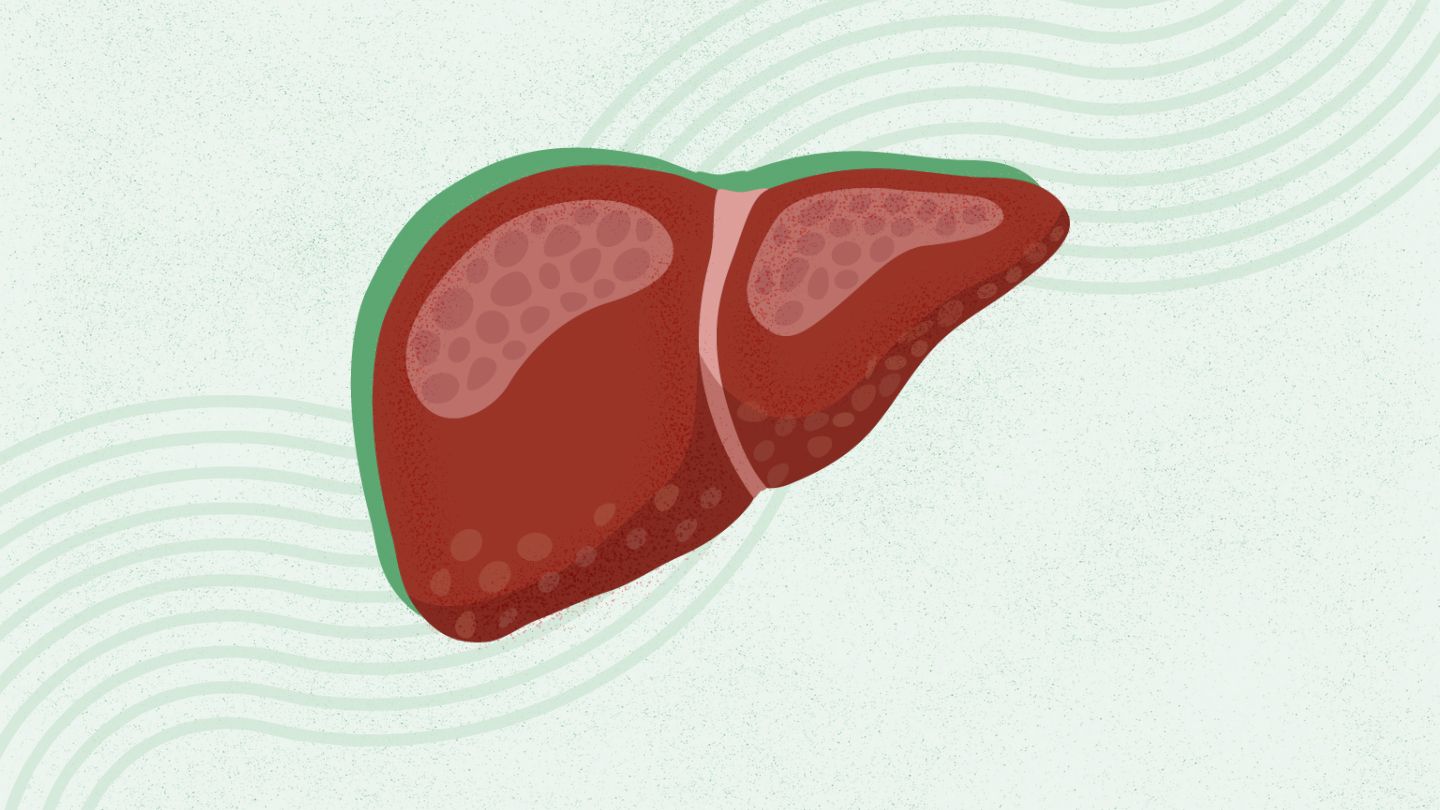Metabolic dysfunction–associated steatohepatitis (MASH) is a progressive form of liver disease that occurs when there’s an accumulation of fat in the liver. MASH is the most severe stage of metabolic dysfunction–associated steatotic liver disease (MASLD) , formerly known as nonalcoholic fatty liver disease . Doctors don’t fully understand why some people with MASLD develop MASH and some don’t. However, MASLD and MASH are more common in people who have certain conditions associated with high blood lipid (fat) levels, such those with type 2 diabetes and obesity.e60dc2a1-f33c-4a05-9b50-8e3e8e597629fcc0531d-582a-4bb1-9792-9b8a552d0083 While it’s normal for the liver to store some fat, if more than 5 to 10 percent of the organ’s weight is fat, it’s called steatosis, or fatty liver.e60dc2a1-f33c-4a05-9b50-8e3e8e597629045a182f-b6b7-4c4d-9e59-510cea2cdce5 For most people, steatosis does not cause any issues, but for others the fat can cause inflammation and damage to the liver. An estimated 24 percent of adults in the United States have MASLD, while 1.5 to 6.5 percent have MASH. In other words, abnormal liver enzymes and MASLD are very common but don’t often lead to MASH.e60dc2a1-f33c-4a05-9b50-8e3e8e5976298849318d-96f8-4a7f-a4e9-4c33412ec031
Risk Factors for MASLD and MASH Risk Factors While chronic alcohol use or viruses like hepatitis B and hepatitis C commonly cause liver disease, people with MASLD or MASH have neither virus nor do they drink excessively. It’s not fully understood why MASLD and MASH occur, but high levels of fat in the blood appear to be a big culprit. However, not everyone with MASLD or MASH fits this profile.e60dc2a1-f33c-4a05-9b50-8e3e8e597629f4e023ba-0331-4cfb-a5e9-4228cd11bd67 Still, there are risk factors that make a person more likely to have these conditions: Obesity Studies have found that having a body mass index (BMI) of 30 to 32.5 (obese) was associated with a five- to ninefold higher risk of MASLD and MASH, while a BMI of 37.5 to 40 (severely obese) was associated with a ten- to fourteenfold higher risk compared with normal weight individuals.e60dc2a1-f33c-4a05-9b50-8e3e8e597629a8cac7a8-9df1-4391-b2d7-8085185bb46f Type 2 Diabetes Research estimates that up to 75 percent of people with type 2 diabetes have MASLD . When a person has both of these conditions, they are more likely to advance to MASH at an accelerated rate.e60dc2a1-f33c-4a05-9b50-8e3e8e59762987a7cfbc-7ba5-45d3-a038-662f58c440c6 Abnormal Levels of Fat in the Blood High levels of triglycerides, high levels of LDL (“bad”) cholesterol, and low levels of HDL (“good”) cholesterol are associated with MASH.e60dc2a1-f33c-4a05-9b50-8e3e8e597629620b930b-757a-4dc8-a6ef-876e2829d5a2 Metabolic Syndrome Conditions linked to obesity, including high blood pressure, high triglycerides, high blood sugar, and a large waist size, are risk factors for MASH.e60dc2a1-f33c-4a05-9b50-8e3e8e5976293c469172-d835-45a7-a250-74a69c458a33 Other risk factors associated with MASH include being over 40 years old and being postmenopausal.e60dc2a1-f33c-4a05-9b50-8e3e8e597629b3e0ef06-4746-4c14-b26b-f34b47fe3429
What Are the Symptoms of MASH? Symptoms Many people don’t experience symptoms of MASH, particularly in the early stages. If symptoms do appear, it may be during the moderate stage and include the following:e60dc2a1-f33c-4a05-9b50-8e3e8e597629cdd6c13e-677a-404b-a072-b127f92996bc Ache in the upper right area of the abdomen (where the liver is) Fatigue and weakness Loss of appetite Unexplained weight loss As MASH progresses, cirrhosis , or scarring of the liver, can develop. Symptoms include the following:e60dc2a1-f33c-4a05-9b50-8e3e8e5976291b8e4cea-0ba9-409a-81d7-d98095b9f63b Jaundice , or yellowing of the skin and whites of the eyes Bruising and bleeding easily Swelling of the abdomen Swelling of the legs and feet Enlarged liver or spleen Enlarged veins in your esophagus, which can bleed Portal hypertension, which can cause intestinal bleeding Shortness of breath Persistent itchy skin Confusion, drowsiness, and slurred speech (hepatic encephalopathy) Spiderlike blood vessels beneath the surface of the skine60dc2a1-f33c-4a05-9b50-8e3e8e59762948650800-f045-4d5c-9c2c-9b03af65689c
Metabolic Dysfunction–Associated Steatohepatitis Diagnosis Diagnosis If your doctor suspects that you have liver disease, they’ll run a series of tests that can identify liver damage. To diagnose MASLD or MASH, tests can include the following:e60dc2a1-f33c-4a05-9b50-8e3e8e5976292a13425e-52cc-4b9a-b9ff-39068b6f40fd Blood Tests Taking a blood sample can help detect evidence of liver inflammation, including elevated liver enzymes. A lipid panel will tell your doctor if you have elevated levels of fat in your blood, while a fibrosis assessment test can help identify fibrosis, or scarring. Additional blood tests may rule out other conditions. Most people find out that they have liver disease when routine blood tests detect an issue, and more tests are ordered. Imaging Tests An abdominal ultrasound, CT scan, or MRI will allow your doctor to look at your liver and check for signs of inflammation, swelling, and scarring. Liver Stiffness Tests These modified imaging tests measure stiffness and fibrosis levels in your liver. They include FibroScan and magnetic resonance elastography, which combines ultrasound and MRI imaging. Liver Biopsy The gold standard test to confirm a MASH diagnosis is a liver biopsy, although it’s usually not needed if your doctor is able to find evidence of MASH through other testing measures. To perform a biopsy, your doctor will insert a small needle through your abdomen to collect a tissue sample from your liver. This sample can then be analyzed to identify the amount of fat in the liver and determine if there is scarring.
Metabolic Dysfunction–Associated Steatohepatitis Treatment Treatment In March 2024, the U.S. Food and Drug Administration (FDA) approved resmetirom (Rezdiffra) for the treatment of MASH . This is the first and only medication approved to treat this disease.e60dc2a1-f33c-4a05-9b50-8e3e8e59762949a5b7ff-2d80-4ab8-afc0-a0e53ce4cd27 A clinical trial published in February 2024 in The New England Journal of Medicine followed nearly a thousand participants with MASH over the course of a year. The researchers found that those who were treated with resmetirom experienced less disease progression and more improvement in liver fibrosis compared with those receiving a placebo.e60dc2a1-f33c-4a05-9b50-8e3e8e5976290f35b850-20ac-4b3e-b635-6fbb5982390b Though not approved by the FDA as a treatment for MASH, semaglutide (Ozempic, Rybelsus) , a weight loss and diabetes drug, has shown some evidence of helping to manage the liver condition.e60dc2a1-f33c-4a05-9b50-8e3e8e5976290aa5252d-8c57-4ebf-bc29-858f5ea66f65 Most people will not need to take medication for MASH. However, a healthy lifestyle, especially managing your weight, can be very beneficial. Studies have shown that losing 7 to 10 percent of your body weight was associated with significant reductions in liver fat.e60dc2a1-f33c-4a05-9b50-8e3e8e597629ddaca2f6-9dea-4d04-bc4a-bffe13aa2632 However, even losing 3 to 5 percent can start to make a difference.e60dc2a1-f33c-4a05-9b50-8e3e8e597629d07e6e6f-b1f8-4503-b3d1-d80bca4d4078 Other important lifestyle changes to help protect your liver include these recommendations:e60dc2a1-f33c-4a05-9b50-8e3e8e59762942fb53d3-518c-4202-a18b-b423e4a01431 Eat a balanced, heart-healthy diet like the Mediterranean diet. Get regular exercise. Manage your blood sugar. Reduce cholesterol in your diet. Avoid carcinogens such as tobacco smoke. Drinking more than two cups of coffee a day can help prevent liver fibrosis due to MASH, according to some studies.e60dc2a1-f33c-4a05-9b50-8e3e8e597629384d3732-a817-44df-a2e1-bdce22317dc8 If MASH has progressed to cirrhosis of the liver, a liver transplant may be needed.e60dc2a1-f33c-4a05-9b50-8e3e8e5976298f03b7b5-cb28-4acb-a3ee-6bae17152edf
Metabolic Dysfunction–Associated Steatohepatitis Life Expectancy Life Expectancy Research has found that MASLD reduces life expectancy by four years.e60dc2a1-f33c-4a05-9b50-8e3e8e597629d8a7157e-20b3-4896-8b54-b385457d7b50 If MASLD progresses to MASH and ultimately advances to cirrhosis of the liver, life expectancy can vary widely, depending on how advanced the cirrhosis is, complications, treatment, and your overall health. In the early stages of cirrhosis, life expectancy may still be more than 15 years, but those with decompensated cirrhosis (when liver function decreases to the point of liver failure) have an average life expectancy of seven years. In severe cases, some people have less than two years.e60dc2a1-f33c-4a05-9b50-8e3e8e597629f22c5d12-ee1a-47a7-adb8-785f59e79e2d
Metabolic Dysfunction–Associated Steatohepatitis Complications Complications The main complication of MASH is fibrosis. Over time, this scarring can lead to cirrhosis, or the replacement of healthy liver tissue with scar tissue.e60dc2a1-f33c-4a05-9b50-8e3e8e597629878b258e-9e02-4966-99ba-446bd712f4c4 Cirrhosis of the liver is associated with an increased risk of the following: Liver cancer Cardiovascular disease Type 2 diabetes End-stage liver failuree60dc2a1-f33c-4a05-9b50-8e3e8e597629ba2ce51a-7f20-4002-bd97-af36af19f46c
Resources We Trust Cleveland Clinic: Metabolic Dysfunction-Associated SteatohepatitisMayo Clinic: Mayo Clinic Explains CirrhosisUniversity of Utah: Nonalcoholic Steatohepatitis (NASH): What Is It And Am I at Risk?John Hopkins Medicine: Nonalcoholic Fatty Liver DiseaseAmerican Liver Foundation: How Liver Disease Progresses
Read the full article here
Leave a comment




